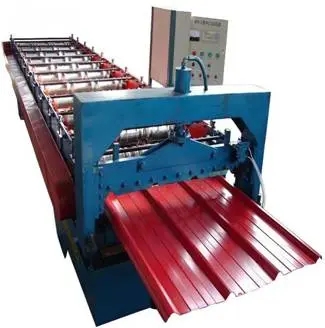
The PU Sandwich Panel Machine Revolutionizing Construction and Insulation
In the modern era, the construction industry is continually evolving to meet the demands for efficiency, sustainability, and cost-effectiveness. One key innovation in this field is the PU sandwich panel machine, a game-changing technology that has transformed the way we think about building materials and structures. This article explores the functionality of PU sandwich panel machines, their advantages, applications, and their overall impact on the construction sector.
Understanding PU Sandwich Panels
PU sandwich panels consist of two outer layers (facings) and a core layer made of polyurethane foam. The combination of these materials results in a lightweight, strong, and thermally efficient panel. The facings are typically made from steel, aluminum, or sometimes fiber-reinforced plastic, while the core provides excellent insulation properties. When manufactured using a PU sandwich panel machine, these panels can meet specific thickness and size requirements, making them versatile for various applications.
The Operation of PU Sandwich Panel Machines
A PU sandwich panel machine is a sophisticated piece of equipment that automates the production of these panels. The machine typically includes several key components feeding systems for the outer sheets, a mixing unit for the polyurethane foam, a foaming and curing section, and cutting systems to create panels of desired sizes.
1. Feeding System The outer facings are fed into the machine, where they are precisely aligned. 2. Mixing Unit Polyurethane components—polyol and isocyanate—are mixed in an appropriately calibrated ratio to ensure optimal foam quality. 3. Foaming and Curing The mixed polyurethane is applied between the outer layers, where it expands and sets, forming a solid panel. This process usually requires a controlled temperature and humidity environment for the best results. 4. Cutting System Once the panels have cured, they are cut to specified lengths, ready for transportation and installation.
This automation not only improves efficiency but also reduces labor costs and material waste.
Advantages of PU Sandwich Panels
1. Energy Efficiency One of the most significant advantages of using PU sandwich panels is their outstanding insulation properties. The polyurethane core provides a high thermal resistance, making buildings constructed with these panels energy efficient. This leads to lower heating and cooling costs, contributing to environmental sustainability.

2. Lightweight PU sandwich panels are considerably lighter than traditional building materials such as concrete or brick. This reduces the structural load on buildings and simplifies transportation and installation processes.
3. Durability and Strength The bond between the facings and core of the panel provides excellent structural integrity, making them resistant to impact, corrosion, and weathering.
4. Quick Installation The panels can be pre-fabricated and easily assembled on-site, significantly reducing construction time compared to conventional building methods.
5. Versatility PU sandwich panels can be tailored to meet specific requirements in terms of thickness, color, and finishes. As a result, they are suitable for a broad range of applications, from commercial and industrial buildings to residential homes.
Applications of PU Sandwich Panels
The versatility of PU sandwich panels allows them to be used in various industries. Common applications include
- Commercial Buildings Often used for warehouses, cold storage facilities, and shopping centers due to their excellent insulation and quick assembly time. - Industrial Facilities Ideal for manufacturing plants, where thermal efficiency can significantly influence operational costs. - Residential Homes Increasingly popular in modern architecture, allowing for energy-efficient homes that are easy to construct and customize. - Refrigeration and Cold Storage With their superior insulating properties, PU sandwich panels are extensively used in the construction of refrigeration units and cold rooms.
Conclusion
The PU sandwich panel machine has significantly influenced modern construction practices by providing a reliable, efficient, and cost-effective solution for producing high-quality building materials. With their exceptional insulation properties, lightweight design, and versatility, PU sandwich panels are increasingly becoming a preferred choice in various construction projects. As the industry continues to evolve, innovations like the PU sandwich panel machine will play a vital role in shaping the buildings of tomorrow, promoting sustainability and efficiency across the board.